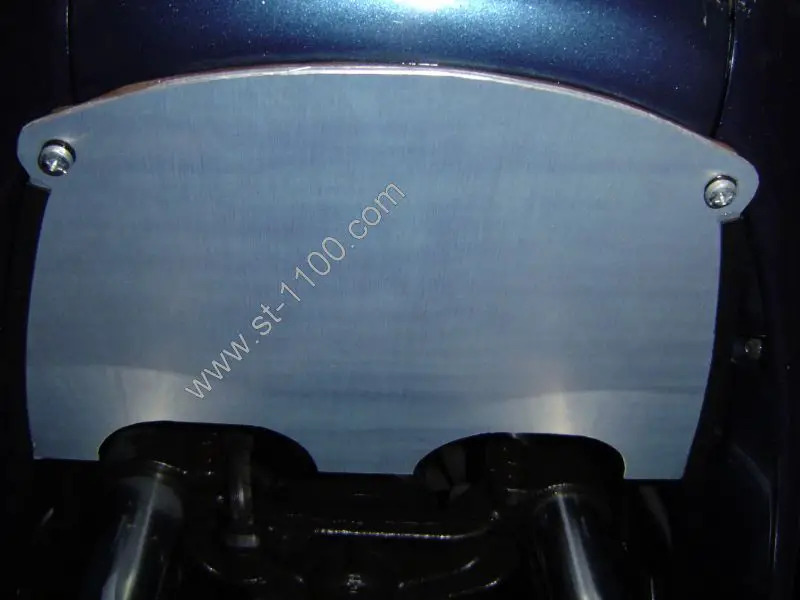What is a baffle plate exactly? And do I really need one? Well, one of the things that the ST1100 does suffer from is wind turbulence, especially if you have the standard screen fitted.
In my case, although the fitting of a taller windscreen somewhat alleviated the turbulence and wind noise around my helmet that I was experiencing at motorway speeds, it had not eliminated it completely. The cause seemed to be that air was being forced up from underneath, through the space round the fork legs. Some sort of air deflector was obviously required. If you look under the headlight of the GoldWing, Honda seem to have thought it was a necessary addition for this bike. Although the gap around the fork legs can not be completely closed off for obvious reasons, the fitting of a flat 5mm-thick aluminium sheet underneath the front headlights serves to eliminate the majority of this turbulence.
Now I don't have access to a wind tunnel so I can't provide empirical evidence of this, but it certainly seems to have decreased the wind noise level at higher speeds and does not seem to affect the bike's handling.
It is fairly easy to make your own. All you need is some aluminium plate (preferably 4mm thick or more). The distance between the centres of the two screw holes is 205mm. First make a rough template using some fairly thick cardboard, and punch the two screw holes. Then put the cardboard in place and mark the curves required. When making the cutouts for the fork legs, ensure that the forks can still turn from lock to lock without touching the plate. The cutouts will need to be slightly larger if you have an ABS model in order to make room for the extra brake hose.
Transfer the outline of the cardboard template to your aluminium sheet - and you're ready to cut. Note - aluminium is soft. I've found the best blade to use (either on a jigsaw or by hand) is one designed for cutting wood. TAKE IT SLOWLY AND WEAR EYE PROTECTION. If you're going to be using a table saw, the speed may be too high for cutting aluminium (unless you have a variable speed saw, in which case set it to a low speed). You can use old candles to provide a bit of lubrication for the blade.
Pad the upper surface of the baffle plate with some thin foam to protect your fairing plastic (double-sided draught excluder tape can be used; just leave the protective covering on one side - you don't want to glue the thing solidly in place).
Your new baffle plate can then be fixed in place. Slightly longer screws are needed to compensate for the thickness of the aluminium (the ones I used were M8 x 20).
I've uploaded a sketch of the dimensions as a "baffle plate plan" which you can print out as a guide.
An unexpected advantage is that rain and dirt seem to be deflected from the forks' bottom yoke, but an unexpected disadvantage is that you'll need to remove the baffle plate in order to change a headlight bulb (that's why you don't want it fixed in place with the double-sided tape)!

